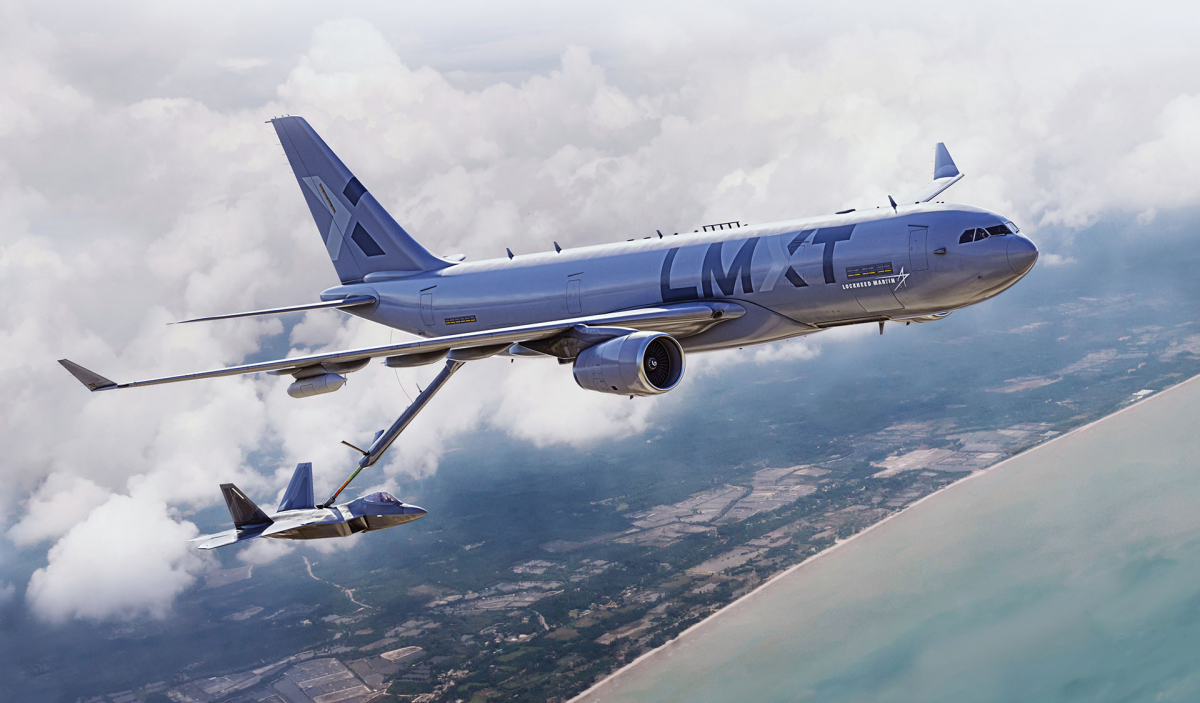Lockheed Martin and Airbus have announced that the LMXT tanker aircraft will be equipped with the Airbus tanker system. The LMXT is Lockheed Martin's answer to the USAF's upcoming KC-Y project. This project seeks to fill the capability gaps that have arisen after the retirement of the first KC-10 Extenders, but also to address the many problems with the KC-46A Pegasus.
The future KC-Y tanker
The KC-Y program has not yet been launched as the USAF is in the process of developing a specification. For now, it is a tanker to fill the capability hole created by the retirement of the KC-10 Extender. It is sometimes referred to as the Bridge Tanker because it is intended to allow the U.S. Air Force to hold a sufficient fleet of tankers until the launch of the likely stealthy KC-Z tanker program.
Sources within the U.S. Air Force have already announced the Pentagon's willingness to procure an "undeveloped" tanker as part of the KC-Y program, a term that seeks to mark the interest of a civilian aircraft that has been militarized and therefore does not require heavy and complex development. This gives Lockheed Martin's LMXT a chance, as it is based on the Airbus A330 MRTT. This aircraft has already long demonstrated its capabilities as the A330 MRTT fleet has accumulated more than 250,000 flight hours in seven air forces and NATO's Multinational MRTT Fleet.
A proven Airbus refueling system
On May 18, Lockheed Martin and Airbus announced that the LMXT refueling system will be produced by Airbus at a purpose-built plant in Arkansas, USA. The plant is likely to create between 60 and 100 highly skilled aerospace jobs.
With this announcement, Lockheed Martin is seeking to reassure the USAF about the LMXT because Airbus has a first-rate refueling system: Boeing cannot fully confirm its system because the refueling cameras are not 100% operational. Thus, it happens that in some situations, it is impossible for the refueling operator (the boom) or the automatic program to detect the aircraft to be refueled. Instead, Lockheed wants to create a tanker and carrier that will work from day one. Now, on April 17, 2020, Airbus had demonstrated that its automatic refueling system (Automatic Air-to-Air Refuelling, A3R) was functional. This system has in fact become the world's first automatic refueling system (but is still in the development phase, although a qualification is announced later this year).
It has already refueled a large number of U.S. aircraft:
- Fighters: F-22, F-35, F-15, F-16, A-10
- Bomber: B-1B
- Transport aircraft: C-17
- ISR: E-3 and E-7
- Patmar: P-8A


"Made in USA"
Lockheed Martin also insists on the American character of the program: certainly it is based on a European-designed aircraft, but the A330s will be produced in Airbus' U.S. plant in Mobile, Alabama, USA. However, Airbus will make a few changes, since the LMXT will have to carry more fuel than the A330 MRTT. Also, the engines are not yet known, but given the "made in USA" policy, a contract with Rolls-Royce or General Electric is probably to be expected.
Once built - but without their military hardware - the A330s will be ferried to Lockheed Martin's Marietta (Georgia, U.S.) plant for conversion into military transport and tanker aircraft. The Marietta facility was previously used by Lockheed to upgrade the C-5 Galaxy strategic airlifters. Its large space will allow easy modification of the A330s while avoiding the need to expand another plant. On January 31, 2022, LMXT program manager Larry Gallogly estimated that LMXT production will take three to four years per aircraft (approximately two years for the A330 and 18 to 24 months for the LMXT conversion). He also estimated that this time frame could be reduced as serial production is initiated.
The RFP is expected to be issued this year and the USAF would like to acquire between 140 and 160 tankers. The first deliveries will likely be expected in 2029, the same time as the last scheduled deliveries of the KC-46A.
Découvrez cet article sur Air&Cosmos

